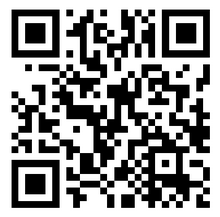UL American Certified Wire Standard Specifications
Release date:2022-02-26 Reading volume: 120
UL certified wire is the safety certification of wire. UL mainly engages in product safety certification and business safety certification business, with the ultimate goal of obtaining products with a considerable level of safety for the market and contributing to ensuring personal health and property safety UL is the abbreviation for Underwriter Laboratories Inc. in the United States. UL Safety Testing Institute is the most authoritative institution in the United States and also a major private institution engaged in safety testing and certification worldwide. It is an independent, for-profit professional institution that conducts experiments for public safety. It adopts scientific testing methods to study and determine whether various materials, devices, products, equipment, buildings, etc. pose a threat to life and property, and the degree of harm; Determine, write, and distribute corresponding standards and materials that help reduce and prevent losses to life and property, while conducting factual research services. UL certification is a non mandatory certification in the United States, mainly for testing and certification of product safety performance, and its certification scope does not include the EMC (electromagnetic compatibility) characteristics of the product.
The commonly used electronic wires are mainly weak current wires, and there are many varieties of these wires, and their categories are also very diverse. Now the editor will introduce you to several commonly used internal electrical wires in daily life. Among all electronic wires, PVC is the most commonly used insulation material, and now we will introduce Line 1007. Usually, electronic wires have a general nominal value in awg (American wire gauge), and the internal conductors should be divided into bare copper and tinned copper according to normal standards, The wire diameter specifications of commonly used regular wires are shown in the following table: model wire gauge wire number/wire diameter outer diameter insulation thickness wire outer diameter maximum conductor resistance model wire gauge wire number/wire diameter outer diameter insulation thickness wire outer diameter maximum conductor resistance 1007 30 7/0.1 0.3 0.41 1.12 354 1007 28 7/0.127 0.38 0.41 1.20 223 1007 26 7/0.16 0.48 0.41 1.30 139 1007 24 11/0.16 0.61 0.41 1.43 88.9 1007 22 17/0.16 0.76 0.41 1.58 57.5 1007 20 26/0.16 0.94 0.41 1.76 34.6 1007 18 41/0.16 1.18 0.41 2.00 23.3 1007 16 16/0.254 1.49 0.41 2.32 15.1 II. Other parameters of electronic wire: Rated temperature: 80 ° C Rated voltage: 300V Standard: ul758, ul1581 and csa? c22、2? No. 210.2 Conductors use 32-16awg single or stranded * * * copper or tinned copper wire through UL? VW-1 and CSA? FT1 vertical flame resistance test, lead-free polyvinyl chloride insulation with uniform thickness, convenient for peeling and cutting
1007 and 1015 are both American electronic wire standards, only remember the following two points: 1. The voltage resistance is different: 1007 is 300V, and 1015 is 600V; So the insulation thickness is different, 1015 is much thicke









